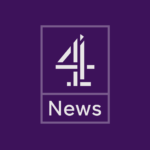By Jennie Chapman
Until recently, Chris Kirkland was best-known for becoming English football’s most expensive goalkeeper, when Liverpool signed him, aged just 20, for £6 million in 2001. Two decades later, Kirkland was in the news again, this time on the front rather than the back pages, where he bravely revealed that he was in recovery from an addiction to the synthetic opioid tramadol that saw him taking up to 50 tablets a day and driven to the brink of suicide.
The pills on which Kirkland became dependent were not illicit, though he admitted sourcing them through means other than his doctor in the later years of his addiction. Like many footballers, his playing career was beset by injuries; the tramadol was legitimately prescribed and, at least at first, used as directed. It is commonly believed that prescription medications, as well as those available over a pharmacy counter, are inherently ‘safe’ and non-habit-forming. This misunderstanding, along with the shame associated with addiction and a belief that services aren’t geared up to help people with prescription drug dependencies, has resulted in a hidden population of people struggling, often silently, with addiction to tablets that may have been prescribed by a doctor or even – as is the case with codeine – available in chemists without a prescription. I know, because I used to be one of them.
Like Kirkland, my addiction started with a visit to the doctor. I had injured my back when I was 15 and, despite excellent physiotherapy, continued to struggle with nasty flare-ups of pain and inflammation in the years that followed. When paracetamol and ibuprofen cease to be effective, codeine, often combined with paracetamol in the form of co-codamol, is the next go-to. Codeine is a very effective treatment for short-term, acute pain and, when taken correctly with careful monitoring, is largely safe. It is, however, less effective for long-term pain and, being an opiate, carries a significant risk of addiction, as well as tolerance, whereby ever higher doses must be taken to achieve the same effect. It’s worth noting that codeine, tramadol and other prescription painkillers such as hydrocodone and oxycodone, all metabolise in the body as morphine. In this regard, they are no different from heroin and fentanyl.
Looking back at my own battle with pharmaceutical opioids, it is hard to pinpoint where each line was crossed – from taking the tablets as directed, to taking them for other purposes (I quickly discovered that while codeine was moderately useful for treating my physical pain, it was considerably more effective in blunting the emotional pain of social anxiety and low self-esteem), to taking them daily whether I was in pain or not, to gradually upping the dose, to finding myself physically as well as psychologically dependent, suffering horrendous withdrawal symptoms if I found myself without tablets. I do know that if I hadn’t had the opportunity to supplement my prescription with easily available over-the-counter tablets, I almost certainly wouldn’t have struggled to the extent that I ultimately did. The UK is one of the few countries where codeine products can still be purchased in pharmacies: in the USA, Australia, and through most of Europe, it is strictly prescription only due to its addictive properties. While safeguarding measures are in place, with limits on pack sizes, prominent packaging warnings, and pharmacy staff encouraged to intervene if they suspect a customer is over- or misusing codeine products, these are easily ignored or circumvented: many high streets and town or city centres have multiple chemists and ‘pharmacy-hopping’ is – both in my experience and according to academic research – easily done. Despite regularly buying the same product from the same pharmacy and, often, from the same counter assistant, week in week out, I was only challenged on my buying behaviours once in ten years. Away from the high street, illicit pharmaceuticals can be found and purchased with little effort online. In an interview with the Guardian, Kirkland describes “Googling ‘painkillers available’…and getting them within two or three days.”
Kirkland chose to speak out because the issue of prescription drug misuse remains largely hidden and widely misunderstood – perhaps even by services which, understandably, have tended to target their limited resources towards seemingly more ‘serious’ addiction problems involving alcohol or Class A drugs. Because of the shame and secrecy surrounding prescription and over-the-counter drug addictions – many of those affected are ‘functioning’: working, paying their bills and taking care of their families while desperately trying to maintain, and conceal, their habit – the extent of this form of misuse is difficult to ascertain, and therefore difficult to respond to with robust public health measures around education, prevention and harm reduction. We do know that the problem is growing, however: drug-related deaths involving codeine, for example, have more than doubled in the last decade, while harms caused by illicit pharmaceuticals such as pregabalin, gabapentin and benzodiazepines are increasingly concerning professionals.
It took extensive therapy, medically assisted treatment, and the incredible peer support that Red Rose Recovery provides for me to break my addiction to codeine, tramadol and other prescription drugs, a dependency that held me in an ever-tightening stranglehold for more than ten years. I am beyond grateful for my recovery; but I regret that there were so many wasted, desperate years in which I delayed reaching out for help because embarrassment and fear held me back. Through these years of mortified silence, my dependency skyrocketed while my mental health spiralled. It didn’t need to be this way. I am certain there are many others like me, still too paralysed by their shame – and perhaps, the fear that their substance misuse won’t being taken seriously because it doesn’t involve street drugs – to seek the recovery they desperately want. We must do more to help them by making recovery inclusive, accessible, and visible; and by telling our stories, loudly and relentlessly, in the hope they’ll be heard by those still in the dark, looking for the light.






